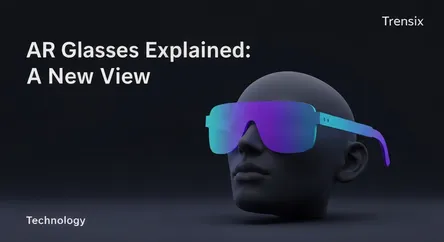Technology
AR Glasses Explained: A New View

Discover Augmented Reality (AR) glasses, the wearable tech that overlays digital information onto your real-world view. Learn why they're trending.
What is it?
Augmented Reality (AR) glasses are wearable computer devices that look like conventional eyewear but have the ability to project digital information directly into the user's field of vision. They overlay computer-generated images, graphics, and text onto the real world, creating an interactive, mixed-reality experience. Unlike Virtual Reality (VR) which fully immerses a user in a digital environment, AR glasses enhance the user's existing surroundings. They typically contain transparent displays, processors, cameras, and sensors to understand and interact with the user's environment, enabling hands-free access to data and digital content.
Why is it trending?
AR glasses are trending due to significant advancements in miniaturization, processing power, and display technology. Major tech companies are investing billions in their development, signaling a shift towards the next major computing platform after smartphones. The release of more consumer-friendly models with sleeker designs and improved functionality has captured public imagination. Furthermore, the expansion of 5G networks provides the high-speed, low-latency connectivity essential for a seamless AR experience, driving interest from both developers and consumers for applications in gaming, navigation, and social media.
How does it affect people?
AR glasses are poised to fundamentally change how people interact with information and the world around them. For everyday users, this means hands-free directions that appear on the street ahead, instant language translation during conversations, or interactive product information while shopping. In professional settings, a surgeon could view a patient's vital signs without looking away from the operation, or an engineer could see digital blueprints overlaid on a physical structure. This technology promises to boost productivity, enhance learning, and create more intuitive, seamless connections between our digital and physical lives.